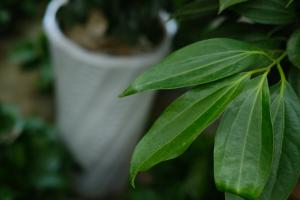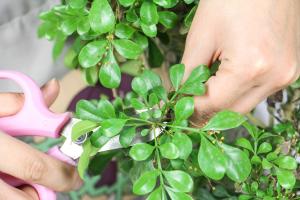How to Care for a Sick Tomato Plant in Pot
Tomato plants can thrive in pots, but sometimes they can become sickly and require extra care. If you notice your tomato plant is in distress, don't worry. There are simple steps you can take to nurse your plant back to health.
Diagnose the Problem
The first step to caring for a sick tomato plant is to identify what the problem is. Common issues include pests, diseases, and deficiencies in nutrients or water. Look for signs of damaged leaves or stems, discoloration or spots on the leaves, and wilting or stunted growth. Once you've determined the cause, you can take steps to solve the problem and restore your tomato plant to good health.
Provide Proper Watering and Drainage
Tomato plants need consistent watering to stay healthy. Too much or too little water can cause stress and lead to issues like root rot or nutrient imbalances. Make sure your pot has good drainage so that the soil doesn't become waterlogged. A common rule is to water your tomato plant when the top inch of soil is dry to the touch. Slow and deep watering is more effective than frequent, shallow watering. Avoid wetting the leaves, as this can promote disease.
Supply Adequate Nutrients
Tomato plants are heavy feeders and need plenty of nutrients to thrive. When plants are grown in pots, the soil can lose nutrients quickly. You can use a fertilizer specifically formulated for tomatoes, or create your own using compost or manure. It's important not to over-fertilize, as this can damage the plant. Follow the instructions on the fertilizer packaging and apply as directed. Insufficient nutrients can cause stunted growth and yellowing leaves, so make sure you're providing enough for your plant.
Control Pests and Diseases
Pests and diseases pose a threat to tomato plants and can quickly ravage them if not addressed promptly. Some common pests that attack tomato plants include aphids, mites, and whiteflies. You can use organic or chemical insecticides to control pests, but be careful not to damage the plant in the process. Diseases like powdery mildew, blight, or leaf spot can also be a problem. Remove infected plant parts and use fungicides to prevent the spread of disease. It's essential to catch and treat pest and disease problems early to prevent irreversible damage to your plant.
Check for Environmental Factors
In addition to pests, diseases, and nutritional issues, environmental factors can play a role in the health of your tomato plant. If the leaves are turning yellow, it may be a sign of stress from too much sun or heat. If the leaves are curling or the plant is wilting, it could be due to lack of humidity or air circulation. Make sure your plant is getting the right amount of light, temperature, and humidity for optimal growth.
In Conclusion
Caring for a sick tomato plant requires observation, patience, and a little know-how. By diagnosing the problem, providing proper watering and drainage, supplying adequate nutrients, controlling pests and diseases, and checking for environmental factors, you can help your tomato plant recover from illness and grow strong and healthy.

 how many times do yo...
how many times do yo... how many planted tre...
how many planted tre... how many pine trees ...
how many pine trees ... how many pecan trees...
how many pecan trees... how many plants comp...
how many plants comp... how many plants can ...
how many plants can ... how many plants and ...
how many plants and ... how many pepper plan...
how many pepper plan...





























